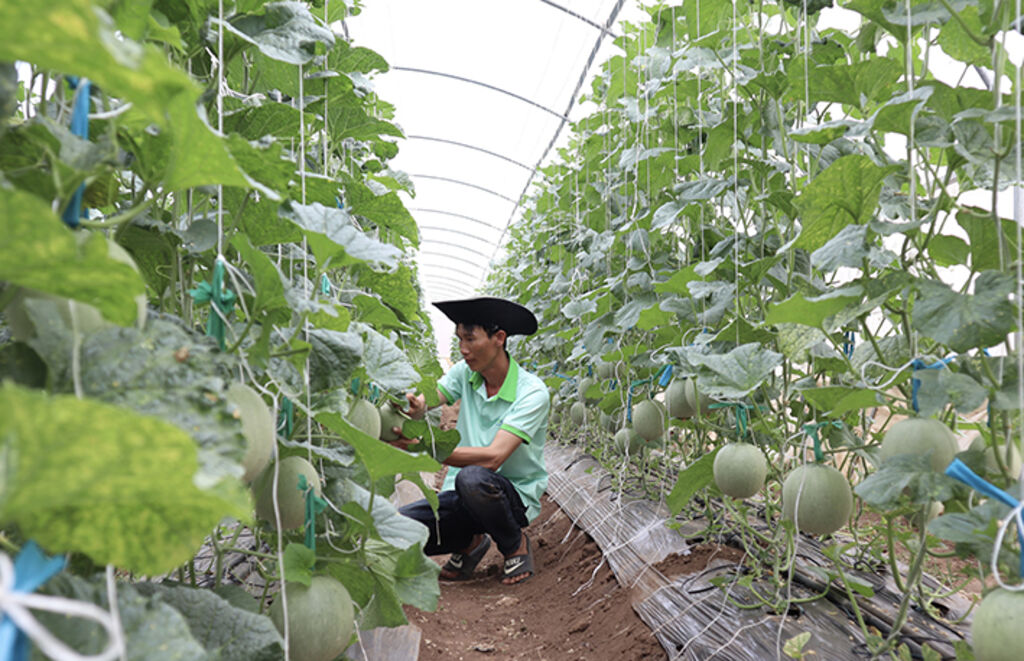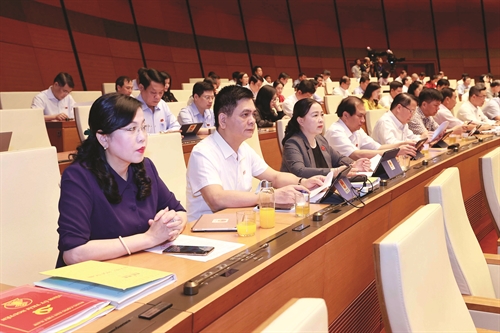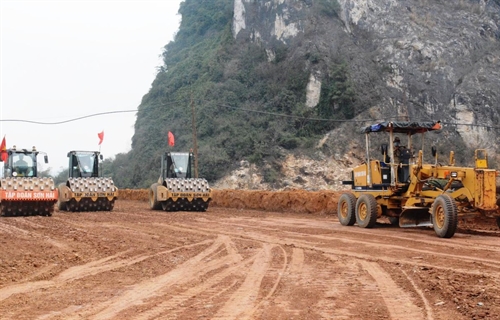 |
| An organic cataloupe farm in Ninh Thuan province__Photo: Xuan Anh/VNA |
Professor-Doctor Chu Hoang Ha, Vice President of the Vietnam Academy of Science and Technology, who is also Director of the Academy’s Institute of Biotechnology, speaks to the Vietnam News Agency about the development and application of biotechnology for national sustainable growth.
What is the importance of Politburo Resolution 36/NQ-TW dated January 30, 2023, on the development and application of biotechnology for national sustainable development in the new situation?
Biotechnology is an extremely important field for the development of the world as well as Vietnam. Since 2005, the Party Central Committee’s Secretariat has issued a number of documents on the issue and, most recently in January, the Politburo adopted Resolution 36/NQ-TW on the development and application of biotechnology for sustainable development of the country in the new situation.
These are extremely important orientations for the development of biotechnology in our country, demonstrating the Party’s viewpoints, guidelines and directions on the development of an important science-technology industry expected to make important contributions to national development.
Resolution 36 was issued timely in the new situation. In the context of the Fourth Industrial Revolution and the world just experiencing the COVID-19 pandemic, it shows the importance of biotechnology in response to such challenges as climate change and plastic waste pollution as well as opportunities and benefits to be taken advantage of for the country’s development.
How do you evaluate the position and capacity of Vietnam’s biotechnology industry today compared to other countries in the world?
Biotechnology has made numerous contributions to the development of our country. Particularly, the biotechnology sector has seen tremendous growth in terms of both quantity and quality of biotechnology researchers in nearly 20 years after Directive 50-CT/TW was issued in 2005 by the 9th Party Central Committee.
Progress has been made in terms of the resources invested in research activities, equipment, physical facilities, and the establishment of biotechnology laboratories.
However, in comparison to demand, it must be admitted that the biotech industry still has various limitations. Biotech businesses stay deficient in quantity and weak in quality, leading to the fact that the market for the biotechnology industry has not yet been formed.
From my perspective, Vietnam’s biotechnology industry ranks fourth or fifth in ASEAN, after Singapore, Thailand, Malaysia and Indonesia.
With the current capacity of our country’s biotechnology industry, how do you assess the ability to achieve the goal set out in Resolution 36 that by 2030, Vietnam’s biotechnology will reach the global advanced level in a number of important fields? Which areas of the biotechnology industry can be developed to reach the global level?
In spite of limited capacity, Vietnam’s biotech has certain advantages and should focus on some sectors in the time to come for national development.
Specifically, we should focus on biotech application in agriculture, such as selection of cultivars and animal breeds, veterinary drugs, biological pesticides, vaccine development, and biological products used in agriculture, feed for aquaculture, and biological fertilizers.
Biotechnology also needs to be applied in livestock production, aquaculture and smart crop production.
With the advantages in agriculture, livestock production and processing industries need to apply biotech in the future to raise productivity, product quality and competition with the global market.
Another area in which it is necessary to focus on biotech application is the area of medicine and healthcare, such as biological drugs, vaccines, and drugs from medicinal herbs, together with the application of biotechnology in the treatment of diseases such as stem cell therapy, gene therapy, regenerative medicine, and personalized medicine.
Vietnam is one of the leading countries in the world’s green transition, with a commitment for net-zero emissions by 2050. Therefore, the use of biotechnology in environmental protection is really critical.
Biological products can be used to treat barn smells, and river, lake, and wastewater contamination. The application of biotechnology in environmental protection also helps decompose inorganic and organic toxins, treat industrial wastes, as well as handle oil spills or oil pollution.
It is also important to apply advanced biotechnology in security and national defense. For example, the use of biological data and DNA to identify the remains of martyrs and solve the war consequences.
What are the advantages and disadvantages of biotechnology application in our country today?
The attention of the Party and the State through the issued guidelines and policies is one among the advantages of biotech application in Vietnam.
The country has a reasonably developed agricultural production and a high demand for technology and biotechnology products for agricultural production. There is a great need to apply biotechnology in processing agricultural products and food.
Furthermore, our nation has a vast population, active people, and a young generation that is ready to learn, which is an advantage in terms of human resources for developing the biotechnology sector in the future.
Vietnam has a high demand for the use of biotechnology in manufacturing medications, healthcare products, and medical examination and treatment.
Abundant biological resources also serve as an advantage for our country to develop biotechnology in the near future.
Meanwhile, challenges have also been mentioned in Resolution 36 and by scientists and managers. For example, the legal system, mechanisms and policies in biotechnology research, development and application still see limitations and remain inconsistent, sometimes hindering the application of biotechnology in life and production.
Some important fields of biotechnology are still behind the times and have not reached the needs of reality. Human resources for biotechnology are qualitatively insufficient and qualitatively weak in some fields of the biotech industry.
Biotechnology facilities, laboratories and research facilities are inadequate while there are not many large corporations investing in biotechnology. This shows weaknesses in the country’s biotechnology industry, not to mention that there is no market for science and technology in general and for biotechnology in particular.
What solutions are needed so that Resolution 36 can prove effective and overcome difficulties and make full use of existing advantages?
Resolution 36 clearly indicates orientations and solutions for achieving the set objectives. Among these, we can mention key solutions such as carrying out public communication and education to raise the public awareness about the role and importance of the biotechnology industry and its application in agricultural production, food processing, medicine, and environmental protection.
The Resolution also sets forth recommendations and solutions for improving laws, mechanisms and policies in biotechnology research, development and application, such as policies for biotech market development and human resource attraction; policies encouraging businesses to invest in biotechnology, pharmaceutical management, plant varieties and animal breeds, fertilizers and pesticides; and incentive policies to attract foreign direct investment in biotechnology.
At the same time, it is required to strengthen training of biotechnology human resources, combining learning activities with research practice and production practice. Attention should be paid to building a contingent of top scientists.
We must concentrate on increasing investment in physical facilities and equipment to form a system of laboratories and biotechnology research centers up to international standards, and step up international cooperation in this industry.-









